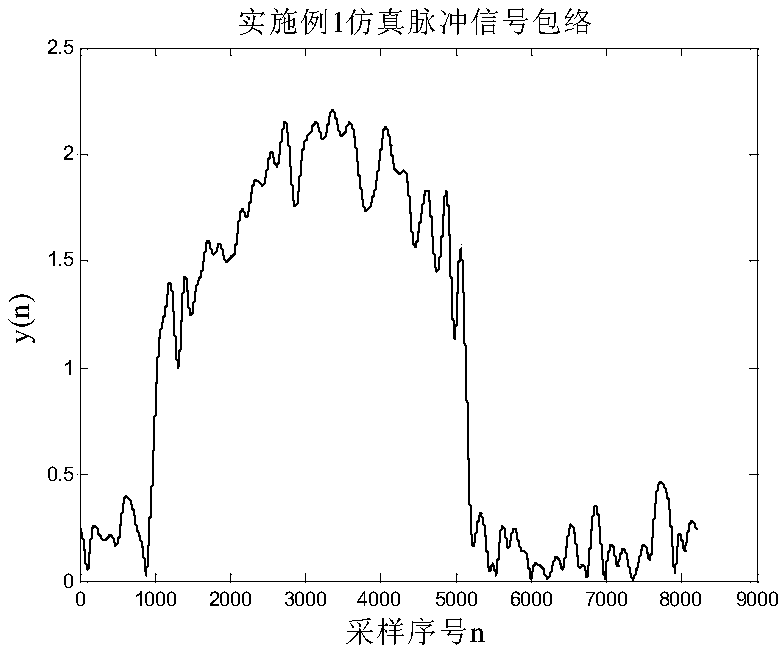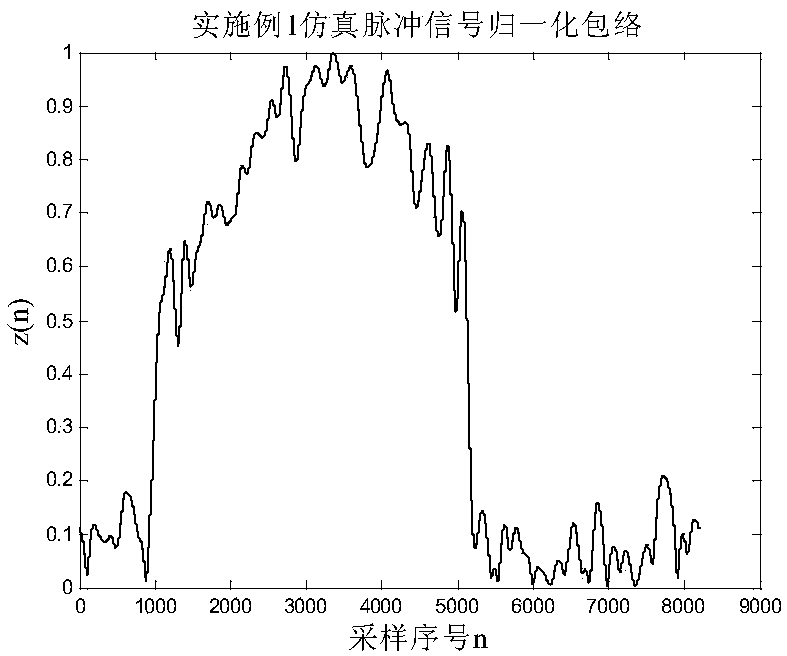Edge feature extraction-based pulse signal arrival time and pulse width estimation method
A technology of pulse signal and time of arrival, applied in the field of signal processing, can solve the problems of very sensitive rationality, estimation accuracy depends on the time step of STFT, no processing gain, etc.
- Summary
- Abstract
- Description
- Claims
- Application Information
AI Technical Summary
Problems solved by technology
Method used
Image
Examples
Embodiment 1
[0168] The simulation signal parameters are set as follows: signal amplitude A=2, initial phase Pulse signal arrival time τ 0 =0.128s, pulse width τ=0.512s, receiving signal duration T=1.024s, signal-to-noise ratio SNR=0dB, signal start frequency f 1 =300Hz, stop frequency f 2 =350Hz, signal sampling frequency f s = 8000Hz.
[0169] The arrival time and pulse width of the simulated pulse are estimated as follows:
[0170] In step (1), the filter bandwidth coefficient ξ=0.1 is set, and the simulated pulse signal envelope extracted by step (2) is as follows figure 2 shown;
[0171] According to step (3), normalize y(n) to get the normalized pulse signal envelope data sequence z(n) and difference sequence σ(n) respectively as image 3 with Figure 4 shown;
[0172] In step (4), initialize W L =10,W H =50, η 1 =0.5, η 2 =0.75;
[0173] According to step (5), calculate the comprehensive evaluation factor u(k) of the rising edge of the normalized envelope z(n), such a...
Embodiment 2
[0180] The simulation signal parameters are set as follows: signal amplitude A=3, initial phase Pulse signal arrival time τ 0 = 0.064s, pulse width τ = 0.256s, receiving signal duration T = 0.512s, signal-to-noise ratio SNR = 3dB, signal start frequency f 1 =500Hz, stop frequency f 2 =500Hz, signal sampling frequency f s = 4000Hz.
[0181] The arrival time and pulse width of the simulated pulse are estimated as follows:
[0182] In step (1), the filter bandwidth coefficient ξ=0.1 is set, and the simulated pulse signal envelope extracted by step (2) is as follows Figure 7 shown;
[0183] According to step (3), normalize y(n) to get the normalized pulse signal envelope data sequence z(n) and difference sequence σ(n) respectively as Figure 8 with Figure 9 shown;
[0184] In step (4), initialize W L =15,W H =45, η 1 =0.45, η 2 =0.8;
[0185] According to step (5), calculate the comprehensive evaluation factor u(k) of the rising edge of the normalized envelope z(n)...
PUM
 Login to View More
Login to View More Abstract
Description
Claims
Application Information
 Login to View More
Login to View More - R&D
- Intellectual Property
- Life Sciences
- Materials
- Tech Scout
- Unparalleled Data Quality
- Higher Quality Content
- 60% Fewer Hallucinations
Browse by: Latest US Patents, China's latest patents, Technical Efficacy Thesaurus, Application Domain, Technology Topic, Popular Technical Reports.
© 2025 PatSnap. All rights reserved.Legal|Privacy policy|Modern Slavery Act Transparency Statement|Sitemap|About US| Contact US: help@patsnap.com



